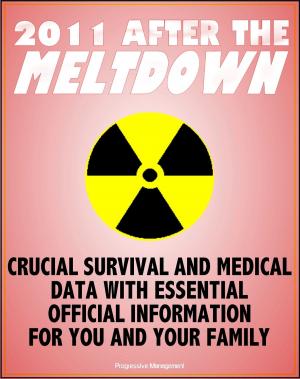Large Aircraft Infrared Countermeasures (LAIRCM) Systems Engineering Case Study - Laser Transmitter Pointer/Tracker
Nonfiction, Science & Nature, Technology, Aeronautics & Astronautics| Author: | Progressive Management | ISBN: | 9781476323367 |
| Publisher: | Progressive Management | Publication: | July 23, 2012 |
| Imprint: | Smashwords Edition | Language: | English |
| Author: | Progressive Management |
| ISBN: | 9781476323367 |
| Publisher: | Progressive Management |
| Publication: | July 23, 2012 |
| Imprint: | Smashwords Edition |
| Language: | English |
This is one of a series of systems engineering case studies prepared by the Air Force Center for Systems Engineering. This case study analyzes the Large Aircraft Infrared Countermeasures (LAIRCM) system, which autonomously detects and declares Infrared (IR) threat missiles, tracks the missiles and jams the missiles to create a miss, resulting in aircrew and aircraft protection. The system has no interoperability requirements outside the platform on which it is installed. The LAIRCM system consists of five basic subsystem components, all related technical orders (TOs), support equipment, training systems, related facilities, materiel, software, services, and personnel required to ensure the system can perform its intended operational function.
The Department of Defense is exponentially increasing the acquisition of joint complex systems that deliver needed capabilities demanded by our warfighter. Systems engineering is the technical and technical management process that focuses explicitly on delivering and sustaining robust, high-quality, affordable solutions. The Air Force leadership has collectively stated the need to mature a sound systems engineering process throughout the Air Force. Gaining an understanding of the past and distilling learning principles that are then shared with others through our formal education and practitioner support are critical to achieving continuous improvement. These cases support academic instruction on SE within military service academies, civilian and military graduate schools, industry continuing education programs, and those practicing SE in the field. Each of the case studies is comprised of elements of success as well as examples of SE decisions that, in hindsight, were not optimal.
Chapter 1 * SYSTEMS ENGINEERING PRINCIPLES * 1.1 General Systems Engineering Process * 1.2 DoD Directive 5000 Series * 1.3 evolving systems engineering process * 1.4 case studies * 1.5 Framework for Analysis * Chapter 2 * LARGE AIRCRAFT INFRARED COUNTERMEASURES (LAIRCM) SYSTEM DESCRIPTION * 2.1 LAIRCM System Description * 2.2 LAIRCM System Components (from LAIRCM Test and Evaluation Master Plan, 2010) * 2.2.1 System Processor (SP) * 2.2.2 Control Indicator Unit (CIU) * 2.2.3 Missile Warning Sensor (MWS) Subsystem * 2.2.4 Laser Transmitter Pointer/Tracker subsystem 2.3 Specifications (LAIRCM) * Chapter 3 * THE LAIRCM STORY - THE FAMILY OF IR COUNTERMEASURES * 3.1 Program History * 3.2 evolutionary phases * 3.3 Acquisition History * 3.4 test and evaluation (T&E) overview * 3.5 interfaces with other programs * 3.6 NexGen MWS Business Strategy * 3.7 Evolutionary Acquisition Objectives * 3.8 Source Selection Strategy * 3.8.1 FRP-Indefinite Delivery Indefinite Quantity (IDIQ) * 3.8.2 Phase III * 3.9 Risk Management * 3.9.1 LAIRCM Program Risk * 3.9.2 NexGen MWS Program Risk * 3.9.3 GLTA Program Risk * 3.9.4 Engineering and Technical Risk Mitigation * 3.10 Summary/Conclusion * APPENDICES * Appendix A: A Framework for Systems Engineering Concept and Responsibility Domains * Appendix B: Biography * Appendix C: Acronyms * Appendix D: References
This is one of a series of systems engineering case studies prepared by the Air Force Center for Systems Engineering. This case study analyzes the Large Aircraft Infrared Countermeasures (LAIRCM) system, which autonomously detects and declares Infrared (IR) threat missiles, tracks the missiles and jams the missiles to create a miss, resulting in aircrew and aircraft protection. The system has no interoperability requirements outside the platform on which it is installed. The LAIRCM system consists of five basic subsystem components, all related technical orders (TOs), support equipment, training systems, related facilities, materiel, software, services, and personnel required to ensure the system can perform its intended operational function.
The Department of Defense is exponentially increasing the acquisition of joint complex systems that deliver needed capabilities demanded by our warfighter. Systems engineering is the technical and technical management process that focuses explicitly on delivering and sustaining robust, high-quality, affordable solutions. The Air Force leadership has collectively stated the need to mature a sound systems engineering process throughout the Air Force. Gaining an understanding of the past and distilling learning principles that are then shared with others through our formal education and practitioner support are critical to achieving continuous improvement. These cases support academic instruction on SE within military service academies, civilian and military graduate schools, industry continuing education programs, and those practicing SE in the field. Each of the case studies is comprised of elements of success as well as examples of SE decisions that, in hindsight, were not optimal.
Chapter 1 * SYSTEMS ENGINEERING PRINCIPLES * 1.1 General Systems Engineering Process * 1.2 DoD Directive 5000 Series * 1.3 evolving systems engineering process * 1.4 case studies * 1.5 Framework for Analysis * Chapter 2 * LARGE AIRCRAFT INFRARED COUNTERMEASURES (LAIRCM) SYSTEM DESCRIPTION * 2.1 LAIRCM System Description * 2.2 LAIRCM System Components (from LAIRCM Test and Evaluation Master Plan, 2010) * 2.2.1 System Processor (SP) * 2.2.2 Control Indicator Unit (CIU) * 2.2.3 Missile Warning Sensor (MWS) Subsystem * 2.2.4 Laser Transmitter Pointer/Tracker subsystem 2.3 Specifications (LAIRCM) * Chapter 3 * THE LAIRCM STORY - THE FAMILY OF IR COUNTERMEASURES * 3.1 Program History * 3.2 evolutionary phases * 3.3 Acquisition History * 3.4 test and evaluation (T&E) overview * 3.5 interfaces with other programs * 3.6 NexGen MWS Business Strategy * 3.7 Evolutionary Acquisition Objectives * 3.8 Source Selection Strategy * 3.8.1 FRP-Indefinite Delivery Indefinite Quantity (IDIQ) * 3.8.2 Phase III * 3.9 Risk Management * 3.9.1 LAIRCM Program Risk * 3.9.2 NexGen MWS Program Risk * 3.9.3 GLTA Program Risk * 3.9.4 Engineering and Technical Risk Mitigation * 3.10 Summary/Conclusion * APPENDICES * Appendix A: A Framework for Systems Engineering Concept and Responsibility Domains * Appendix B: Biography * Appendix C: Acronyms * Appendix D: References















